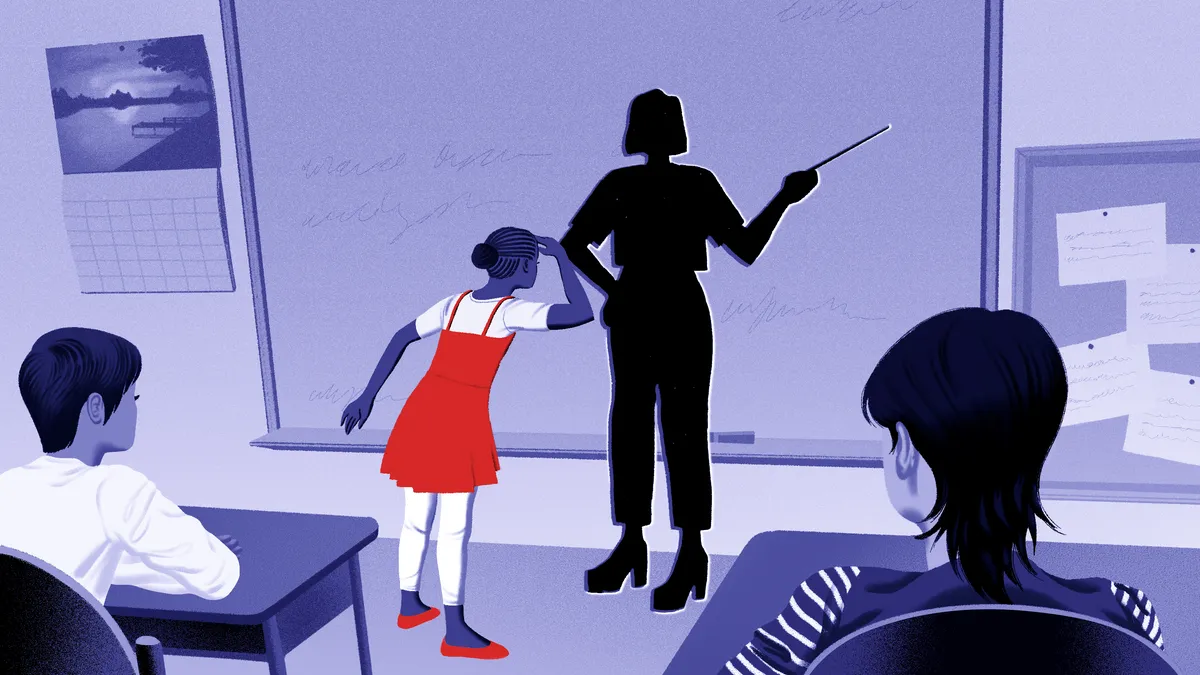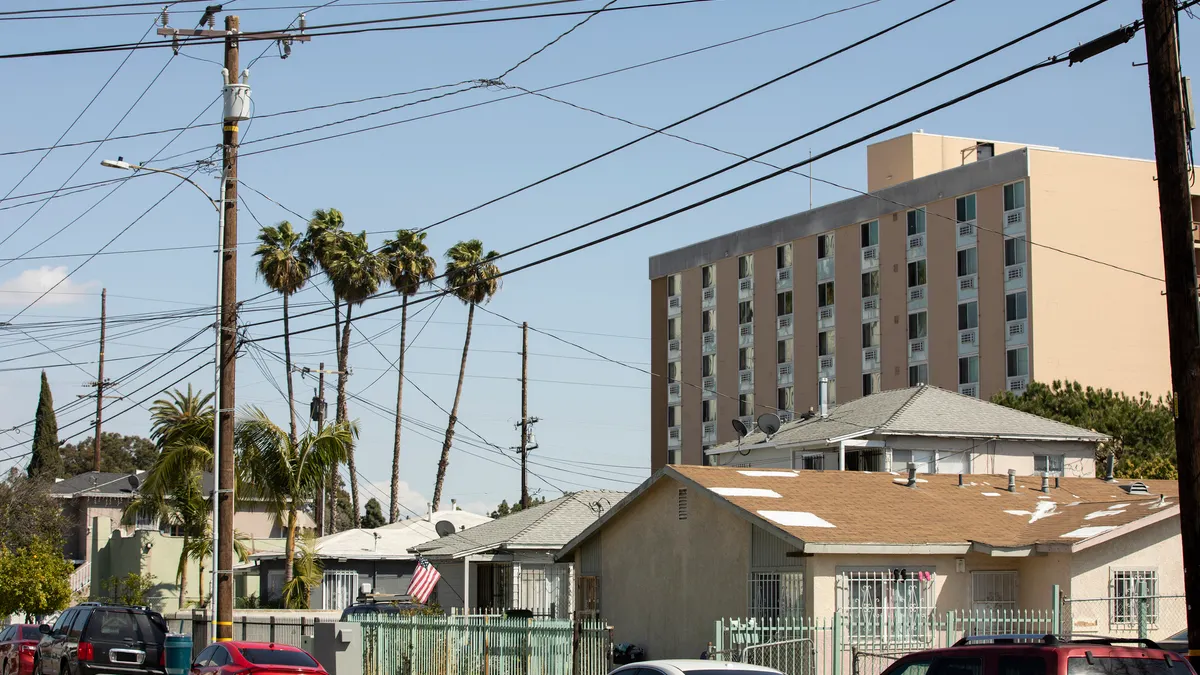A persistent shortage of special education teachers nationwide is leading to a lack of supports and services needed to help students with disabilities thrive in schools, according to an investigation by a federal civil rights panel.
For the past year the U.S. Commission on Civil Rights has held hearings and briefings and conducted research to better understand a decades-long problem that was exacerbated by the COVID-19 pandemic.
The commission's investigation into special educator shortages comes amid an increase in the population of students with disabilities qualifying for services under the Individuals with Disabilities Education Act. During the 2023-24 school year, there were 7.9 million IDEA-eligible students ages 3-21. The previous year, there were 7.6 million, according to data from the U.S. Department of Education analyzed by The Advocacy Institute.
The growing population of students with disabilities, combined with a lag in special education hiring, “has resulted in a dearth of special educators, thus depriving students with disabilities of their right to a free appropriate public education,” the USCCR report said.
The commission's report, released Monday, finds special education teacher shortages are being caused by a myriad of factors, including both a lack of people interested in the field and retention challenges stemming from demanding workloads, administrative burdens, high student loan debt and poor working conditions.
The possible solutions, the report said, are just as varied. They include streamlined licensure programs to support prospective special educators, expansion of school choice options so that public funding follows students, local initiatives like Grow Your Own programs to increase the number of qualified special educators, and adding incentives to keep veteran teachers in classrooms.
"Special needs students possess unique requirements," and meeting those needs with "adequate resources and tailored instructional strategies" can lead to better outcomes, said Stephen Gilchrist, USCCR's lead commissioner for this report, in a statement.
Typically the commissioners vote on the findings and recommendations, but in this case they did not. Rather, Gilchrist said in the report that it was more important for the public to hear commissioners' individual thoughts on the topic.
Special education teacher shortage data
A lack of comprehensive national data is one of the overarching challenges for understanding the scope of teacher shortages and how that impacts students with disabilities, the report noted.
There is some data, however, cite by the commission that illuminates the existence and persistence of special educator shortages.
For instance, most states — 80% — have identified special education as a shortage area from 1998 to 2018, according to a Bellwether Education Partners study. During the 2021-22 school year, 43% of public schools reported vacancies for special education teachers, according to the U.S. Department of Education’s Institute of Education Sciences. Among schools reporting teaching vacancies across the board, IES found, special education vacancies were about twice as likely as for other teaching positions.
The commission also conducted its own research on six states to better grasp the impact of teacher shortages on students with disabilities. Those states — West Virginia, Mississippi, Maine, North Dakota, Kansas and Nevada — had the highest teacher vacancy rates relative to student populations between 2017 and 2023, the commission said.
Proportion of fully certified special educators for select states
Some of the commission’s findings from those case studies include:
- Kansas. The state’s special education teacher attrition rates rose from 9.3% to 15.1% between the 2018-19 and 2020-21 school years, while the percentage of students served under IDEA increased from 15% to 15.7%. More recently, IDEA served even more students — 16.9% during the 2023-24 school year.
- Maine. The state does not collect or report data on teacher vacancies. However, Maine shared that the percentage of its students with disabilities rose from 17% in the 2017-18 school year to nearly 20% in 2023-24. Also, students with disabilities increasingly performed below Maine’s expectations for English language arts and math in the 2022-23 and 2023-24 school years compared to the 2020-21 and 2021-22 school years.
- Mississippi. The number of special educator positions statewide jumped from 5,411 to 6,368 between the 2017-18 and 2022-23 school years, but Mississippi did not provide vacancy data. Meanwhile, the percentage of students with disabilities considered proficient in both English language arts and math increased from 2017-18 to 2023-24. For English language arts, the share jumped from 13.5% to 17.7%, and for math, from 15.3% to 23.4% for math.
- Nevada. Overall teacher vacancies declined from 12.4% to 9.6% between 2021-22 and 2022-23. The commission did not provide any specifics on special educator shortages in the state. Meanwhile, the number of children served under IDEA in Nevada jumped from 54,997 in 2017-18 to 62,069 in 2023-24.
- North Dakota. The number of special educator vacancies statewide grew from 19 to 68 between 2017-18 and 2022-23. Likewise, the percentage of students who qualify for IDEA services in North Dakota also rose in that period. Proficiency gaps for students with disabilities in both math and reading remained fairly stagnant between 2020-21 and 2021-22 and then dipped slightly from 2021-22 and 2022-23, when compared to the performance of all students.
- West Virginia. The state does not collect data on school staffing vacancies. West Virginia did report that 82% of its teachers and 97% of its paraprofessionals are fully certified. Students served under IDEA rose from 44,040 in 2017-2018 to 45,991 in 2023-24.
Possible solutions
While the report did not issue a uniform set of recommendations, individual commissioners offered suggestions for alleviating the special educator shortage. Some common ones included offering local incentives to recruit and retain special education professionals and improving working conditions to prevent burnout. Several commissioners also called for a robust system for collecting and analyzing data on teacher shortages.
At the same time, some commissioners offered conflicting solutions.
Commissioner Gilchrist, a Republican presidential appointee, advocated for a school choice system that allows public funding and resources to follow the student at any school option they choose, a practice known as "back packing.”
"School choice initiatives will not only serve as an accountability measure for schools, but they will also serve as a lever for parents to have empowered choices as they are related to their children," Gilchrist said, adding that students with disabilities “need a plethora of options!"
Commissioner Mondaire Jones, a Democratic congressional appointee, on the other hand, recommended investing in public schools and pointed to expert testimony calling for Congress to fully fund IDEA, which would be at 40% of the additional per pupil cost for special education services.
One commissioner questioned whether the special education teacher shortage is truly a crisis. "This report bristles with charts and graphs. It’s full of data. But in the end, I’m not sure it provides enough information for me to decide whether there is a critical shortage of teachers,” said Commissioner Gail Heriot, an Independent congressional appointee.
Heriot questioned the analysis of data being used to quantify teacher shortages. She also said she wonders if the problem is more regional than national.
The solution, Heriot said, is not more federal intervention. Rather, she called for discipline reforms that allow schools to remove disruptive students, as well as changes to teacher preparation programs.
"Not everybody is willing to go through the kind of 'education' these schools currently offer to become a teacher. Many would prefer to stick a needle in their eye."
Eight commissioners serve on the U.S. Commission on Civil Rights, an independent, bipartisan federal agency that holds public briefings and publishes studies with findings and recommendations. Four commissioners are appointed by the president and the other four by Congress. Each commissioner serves a six-year term and no more than four commissioners can be represented by the same political party.























